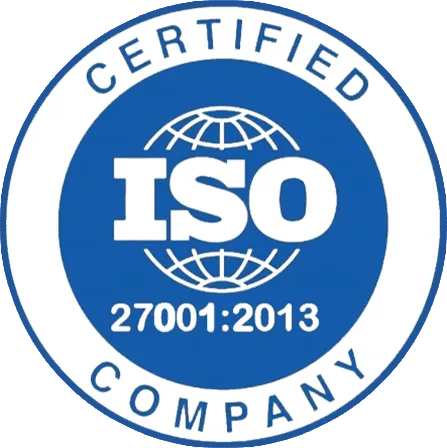When you venture into the B2B world, you will find plenty of cliches used (or should we say overused?). Do these cliches really hold anything of value or are we entrepreneurs still chasing the shadows? We know we have been guilty on more than one occasion of using popular cliches.
So, is there anything wrong with believing and using popular cliches?
Yes, there is.
The problem is; when we overuse the phrases, they lose their meaning. Something similar happens with the strategies we practice in Business to Business ecommerce. Because of their overuse, many of these strategies have lost their lustre, hence have become more of a cliche.
So here we are, with a list of 5 such cliches about Business to Business electronic commerce that you should avoid at all costs.
Table of Contents
1. Business buyers still do the business the old way
We will agree, for some time, the wholesale industry has lagged behind its retail counterpart when it comes to ecommerce, with many choosing to rely on sales through the old means such as sales reps.
But not anymore.
If we look at the current stats, the global B2B online market is more than five times bigger than the B2C market. Studies also reveal that more and more wholesale consumers now prefer to shop online directly from wholesalers.
These tech-savvy business consumers are a primary reason that has forced companies to rethink their marketing, customer experience strategies and operations. As a result, many wholesale companies have started re-evaluating and digitizing their marketing strategies.
So, if you too are stuck in the same old-fashioned ways believing the same old cliches about b2b e-commerce, here are a few tips to jumpstart your strategy.
- Start by integrating cloud-based mobile app technologies. These software and tools allow you to sync up orders to the cloud with your electronic commerce platform in real-time. This mobility helps you and your wholesale customers access your business site while on the go.
- Harness the power of social media and strategically use different platforms (such as LinkedIn) to connect with prospective clients. What’s more, there are even tools available to help you target your social media campaigns to the right demographic.
- Another powerful B2B tool you can use is data analytics. It will not only assist you with monitoring your prospects besides engaging with them but will also get you the much-needed feedback to identify areas of weaknesses in the products or services.
This is just the tip of the iceberg. But you will get enough out of it to begin the digitalization of your business. Moving on to our next cliche,
2. Single sales/support channel suffices for closing deals
Do you really believe a single sales channel will suffice in today’s times? That too, when we ourselves carry a plethora of devices with us all the time? Single support channel was prevalent before the era of ecommerce when companies didn’t have any choice but to talk with sales reps over the phone. But times have changed.
Today, opting for a multiple channel or omnichannel approaches is more of a necessity than a choice. This type of strategy involves the distribution of products and services across multiple channels. Here, since all the channels are tightly integrated with each other, it gets much easier to contact and engage the B2B customers.
Still not sure?
Let’s see what benefits this channel unification will bring to your business
- Each platform comes with its own unique voice and allows a different kind of visibility. For example, if you announce a new product solely on the company’s blog and nowhere else, your customers might miss it or think of it as irrelevant since there are no updates on email or social media about the launch.
- Multi-channel marketing also provides connected branding and appearance. Moreover, it ensures that the audience members are seeing the content on their preferred e-commerce platforms. Also, it helps you appeal to the broadest audience by letting you personalize your messages for each medium.
- Not only your customers but even the marketers prefer some channels over others. They might be good at sporting multiple channels but often specialize in one or two. Therefore, this multi-channel approach will allow the marketing departments to separate responsibilities and focus on what interests them.
- Lastly, it will allow you the ability to test out different content, promotions and designs. Also, you will be better able to shape your messages so as to show your B2B customers how you are helping their business.
3. Searching Business to Business products is a time taking thing
Companies selling products and customers buying them has always been the basis of all businesses. Unfortunately, the wholesale industry has earned a lot of bad reputation when it comes to letting its customers find the products they are looking for. This is common knowledge.
But what most people don’t know is, with the advent of electronic commerce, things took on a completely different turn.
For the better, of course.
The thing is, today’s wholesale e-commerce customers (just like their B2C counterparts) want to be treated as individuals, not as companies or account numbers. And as an entrepreneur, it becomes your responsibility to make the searching and ordering process as simplistic as possible.
But how can you, if you continue to believe in such cliches? Time to meet reality.
Earlier, information regarding product quantities, descriptions, variations etc. was usually discussed over a phone call. Today we have digitization. It allows your customers to access each major and minor details of the products along with virtualizing the products.
Plus, to facilitate advanced search options, B2B websites feature immense product catalogues besides having robust search capabilities. Today, online wholesalers are giving their consumers the ability to perform accurate searches across a variety of product attributes.
Business to Business electronic commerce platforms are providing great convenience to its clients by allowing them to go beyond basic product searches and locate items based on product details, price and availability.
Using StoreHippo as your online platform will be a smart choice here. It offers your customers the flexibility to filter their search results. With its advanced search refinement technology, they can search by price, brand, colour etc. Moreover, it offers hierarchical categories on its e-commerce platform to assist your customers zero in on the products they want.
4. Handling different pricing is too complex
Business to Business pricing strategy is generally Value-Based Pricing. Why? Because it forces you to look outward at your customers to form the perfect pricing strategy for your wholesale business.
Ideally, a great pricing strategy ensures that your customers feel happy paying your price for the value they are getting. Also, it helps strengthen your brand name, build better customer relationships and improve your bottom line.
But how has electronic commerce helped simplify the complex challenges of B2B pricing? Let’s find out.
- Every customer is unique and their cost is reflective of their unique shopping habits. Things like the quantity of orders placed, the time duration between each placed order etc. matter a lot in the negotiated contract price. For example, a business that places smaller orders once a month may see a higher cost than a weekly buyer who orders in bulk. IP based pricing segmentation is one such feature that offers them the price that was promised to them, regardless of what their contract may look like.
- Next comes the ERP, which when connected to your e-commerce, helps sync the updated pricing to be displayed on your business website. Just make sure not to delay any price updates as it may cause confusion among your customers and potential profit loss for your business.The moral of the story; websites help you display and update pricing in real-time.
- Wholesale pricing, similar to retail, is based on size, packaging and weight. And as we click through these options while staying on the same product page, different clicks result in different final costs.What B2B electronic commerce does is smooth out the entire checkout process for easy purchasing. Besides, it helps calculate the pricing instantly which is also unique to the customer.
5. Order delivery is a problem and can’t be streamlined.
We know businesses generally orders their products in bulk, that’s why they are much more concerned about the shipping costs.
Shipping costs also serve as one of the biggest reasons for cart abandonment. Whether or not to offer free shipping? How much shipping cost to charge? Where to find a suitable shipping option? Are these questions bothering you too?
They should.
And don’t worry, you are not the only one facing these critical choices. Your B2B consumers too are equally worried. There are many who don’t like a company’s limited shipping options. Then there are others who don’t like the costs shipping large orders to multiple locations. And so on.
But as is the case with other cliches, this is also just another cliche.
The thing is, modern shipping solutions such as ShipKaro has made these worries a thing of the past. Equipped with state-of-the-art features such as channel integration, wholesale companies can easily increase the speed of deliveries and expand inventory counts.
Also, we know how important an e-commerce integrated platform is when it comes to managing customers, warehouse technology and the ordering process. Integration with ShipKaro makes managing these complex delivery scenarios an easy-to-do thing.
Another benefit of using ShiKaro is that it allows companies to easily set options for shipping by weight, free shipping, or flat rate shipping. Plus, carrier-calculated shipping prices are also available using direct onsite connections to carrier websites.
Want to hear more? ShipKaro’s integrated and efficient system automates the complex logistical decisions such as choosing complex strategies for global shipping, connecting to carriers onsite and automating custom address books used to schedule shipments to multiple sales locations.
There you have it.
Your five cliches about B2B electronic commerce and the truths behind them. The next time you encounter any of them (and it won’t be too long), you know what to do. However, there is another approach you can take.
You must have heard of a phrase (a good one) “prevention is better than cure”.
Prevention, in this case, is choosing the right platform. One that offers automated, web-based solutions that are well past these age-old cliches. One that helps increase efficiency while decreasing costs.
One like StoreHippo, a leader in Business to Business e-commerce space. StoreHippo is a modern-day e-commerce platform provider that is pretty versatile in nature. It offers reliable, high-performance purchasing experiences to help your buyers meet their demands.
Want to learn more?
Why don’t you visit our website and book a free demo with us!
We are more than happy to help.





















Leave A Comment